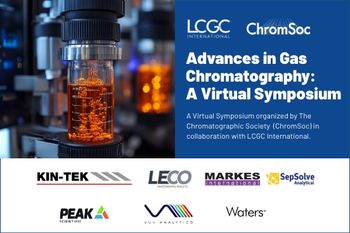
- The Application Notebook-07-01-2016
- Issue 4
Determination of Patulin in Processed Foods Using QuEChERS Extraction and UHPLC–MS–MS Analysis
Brian Kinsella, UCT, LLC
This application note outlines a QuEChERS procedure for the detection of patulin in processed food products. It typically grows on fruit, including apples, pears, peaches, and grapes, but has also been reported in vegetables and cereal grains. Patulin has been implicated as a possible carcinogen and teratogen, although an official designation has not yet been made. An apple-based baby food product was used as a representative sample matrix. The inclusion of graphitized carbon black (GCB) in the dispersive solid-phase extraction (dSPE) cleanup step produces a clean sample extract. Analysis is carried out by ultrahigh-pressure liquid chromatography coupled to tandem mass spectrometry (UHPLC–MS–MS) using the polyaromatic Selectra® DA column.
Procedure
1. Sample Extraction:
(a) Weigh 10 g of sample into a 50 mL polypropylene centrifuge tube.
(b) Add 10 mL of acetonitrile.
(c) Add the contents of the ECMSSC-MP Mylar pouch and shake for a minimum of 1 min (by hand or mechanically).
(d) Centrifuge the samples at ≥ 3000 × g for 5 min.
2. Sample Clean-up of Extract
(a) Transfer 1 mL of supernatant to a 2 mL dSPE tube (CUMPSC1875CB2CT).
(b) Vortex the sample for 30 s.
(c) Centrifuge the samples at ≥ 3000 × g for 5 min.
(d) Transfer 500–600 µL of purified supernatant into an autosampler vial (filter if desired).
Instrumental
LC–MS–MS: Thermo Scientific™ Dionex™ Ultimate™3000 UHPLC and TSQ Vantage™ (MS–MS)
Column: UCT Selectra® DA UHPLC column 50 × 2.1 mm, 1.8-μm
Guard column: UCT Selectra® DA guard column 10 × 2.1 mm, 1.8-μm
Injection volume: 5 μL
Mobile phase A: D.I. H2O
Mobile phase B: Acetonitrile
Column flow rate: 0.40 mL/min
Results
Conclusion
Excellent recoveries ranging from 83% to 90.1% were obtained using UCT’s QuEChERS salts (ECMSSC-MP) and dSPE (CUMPSC1875CB2CT) clean-up procedure in conjunction with the Selectra® DA HPLC column (SLDA50ID21-18UM) for the analysis of patulin in processed foods. For increased sensitivity, clean-up of a 5 mL extract using a 15 mL dSPE tube (ECQUEU615CT) can also be used.
UCT, LLC
2731 Bartram Road, Bristol, Pennsylvania 19007, USA
Tel: (800) 385 3153
E-mail: methods@unitedchem.com
Website: www.unitedchem.com
Articles in this issue
over 9 years ago
Propylene Glycol (PG) in Alcoholic Beveragesover 9 years ago
Analysis of Artificial Sweeteners by HILIC–MS Methodover 9 years ago
Antibody Drug Conjugate (ADC) Analysis with SEC–MALSNewsletter
Join the global community of analytical scientists who trust LCGC for insights on the latest techniques, trends, and expert solutions in chromatography.





